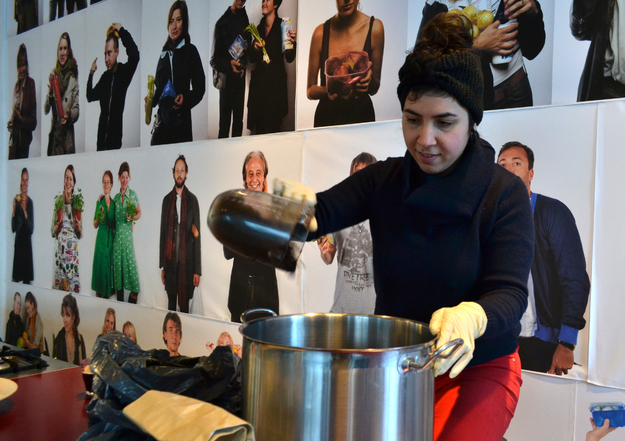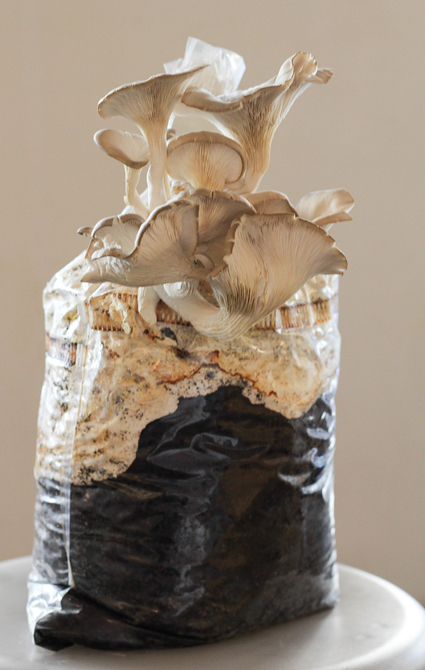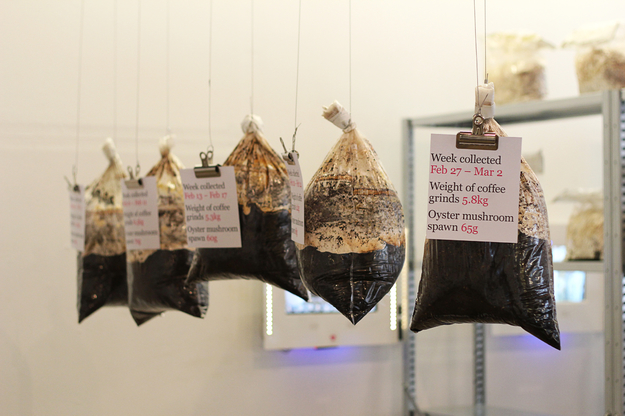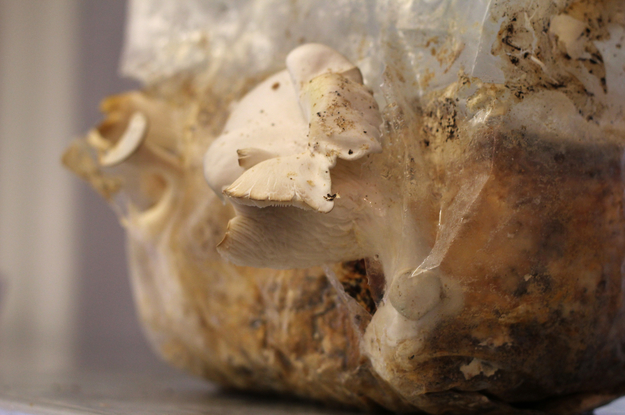Inspired by Jan Willem Bosman Jansen's talk at Ignite 14 and the endless coffee consumption at the Mediamatic office, we decided to try a little experiment of our own. Infographics and mushroom growing are together at last.
The Process
At the end of every work week the used coffee grinds are collected from the office, taken downstairs to the Mediamatic Bank, and weighed for the sake of statistics. In order to give the mushrooms the most ideal growing environment with lots of nutrients, a mixture of calcium carbonate, wheat bran, and rye grains are added to the coffee grinds.

This entire mixture is then packed into a mushroom bag (which has air strips for ventilation) and prepared for sterlization. The coffee mixture needs to be sterilized so that there are no foreign molds or bacteria growing inside. The ideal growing environment for mushrooms is one that is also loved by other uninvited guests. We use an extra large pressure cooker to sterilize the coffee mixer, by simply steaming the mixture for about an hour.
Once the hour of sterilization is up, the pressure cooker is taken to our clean room, where it is opened up and the bag of coffee grinds is placed inside one of the sterile work areas to cool down. Really high temperatures (above 40 degrees C) will kill the mushroom spawn, so this cooling down time is really important.
Now that everything is nice and cool, the coffee mixture can be inoculated with the oyster mushroom spawn. This spawn usually comes in the form of wheat grains that are covered with the mushroom spores. The spawn is poured into the bag with the coffee grinds, shaken around a little bit to distribute everything evenly, and sealed up nice and tightly with some strong tape. Then we hang up the bags and wait patiently for the mycelium and the mushrooms to grow.
Come see how well our oyster mushrooms are growing at the Paddestoelen Paradijs exhibition.
Coffee grind mushrooms - This project is part of the Paddestoelen Paradijs exhibition.


